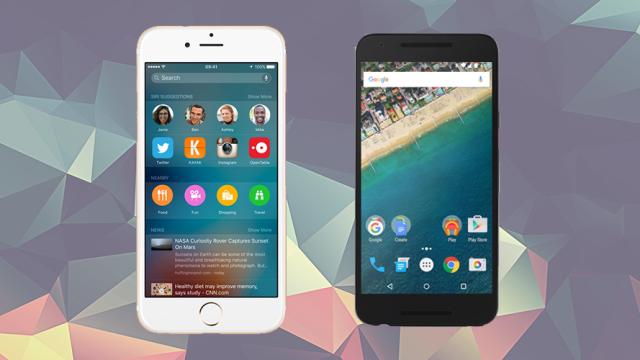It wasn’t too long ago that we put the major mobile operating systems head to head, but with big updates from both Google and Apple in the meantime, we think it’s worth another look at where they both stand. Is there a clear winner? Or are they barely distinguishable any more?
Visual Design and Interface
Neither Android 6 nor iOS 9 brought much of a visual change to their respective mobile OSes. Google’s Material Design is still the chunky, colourful, eye-catching option, iOS the more refined and elegant of the pair. Ultimately, beauty is in the eye of the beholder and you’ve probably already made your choice about which you prefer.
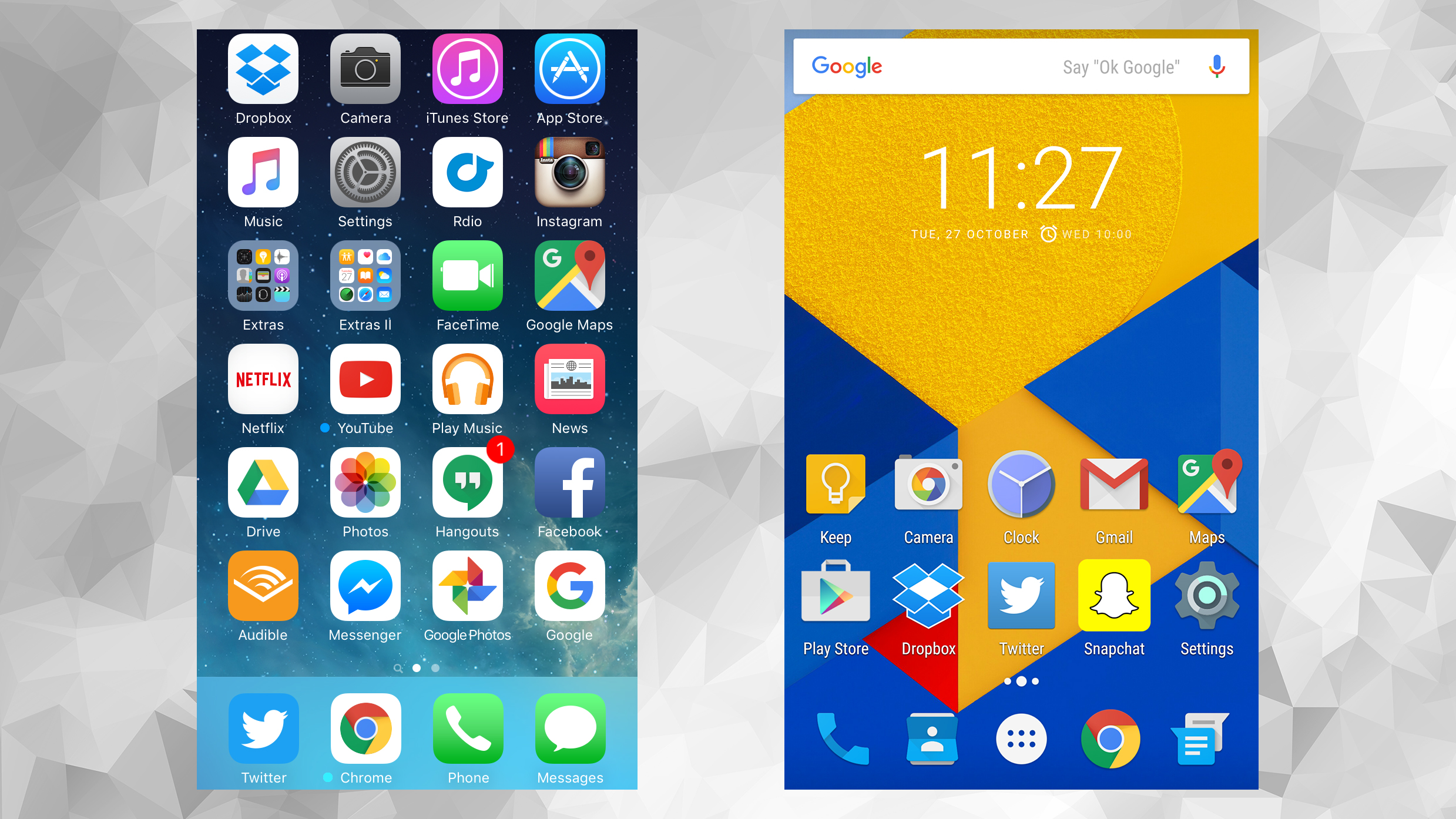
At its best, Android 6, known also as Marshmallow, can look vibrant and beautifully ordered, with the classic lines of the card-based interface adopted by Android itself and most of its major apps (and apparently Facebook now). At its worst, it comes across as cartoonish and basic with perhaps too much white space for its own good.
Similarly iOS 9 can appear classy and streamlined one minute and rather old-fashioned and unnecessarily idiosyncratic the next. If you want an easier way to compare the two approaches, try logging into Google Drive and iCloud on the web — the same design principles stretch across most of these companies’ products, for better or worse.
Where iOS does have the edge — in our opinion — is on tablet screens, and the Split View and Slide Over modes of iOS 9 only confirm that. In contrast, Android looks stretched and rather lost on larger devices, which might be one of the reasons we haven’t seen another Nexus 7 yet.
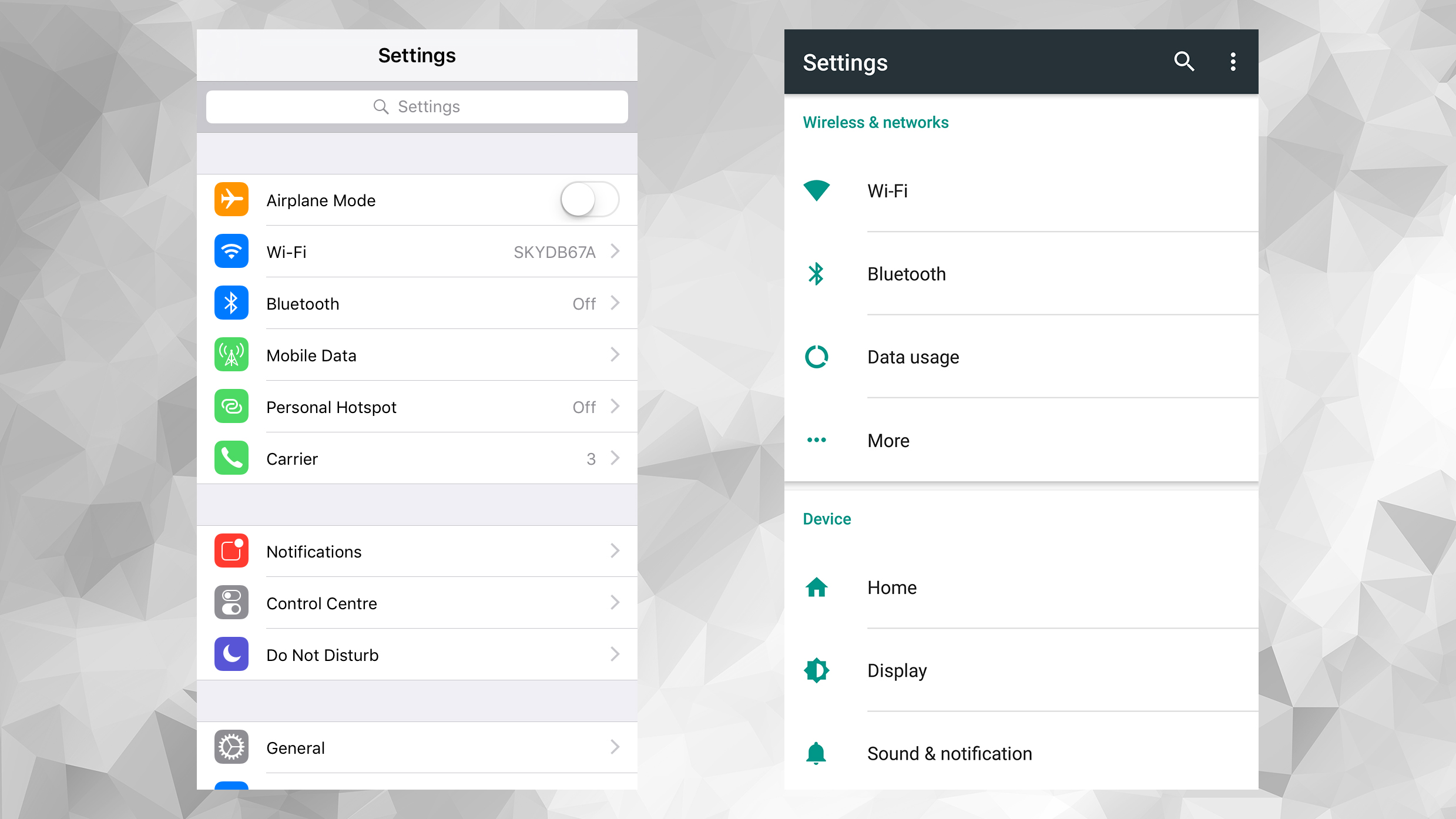
It may seem ridiculous to choose a mobile OS because of the way it looks, but the contrasting visual approach is one of the few remaining differences between iOS and Android that you’re going to actually notice. Perhaps all that pixel tweaking is more important than we realise.
The Major Differences
After all these years, Android is still the king of customisation. iOS apps can put widgets in the Notification Center, but if you want a calendar on your home screen rather than a row of icons, you need an Android device. Install an alternative launcher, and you’ve got a mobile operating system that looks nothing like stock Android — again, not possible on iOS.
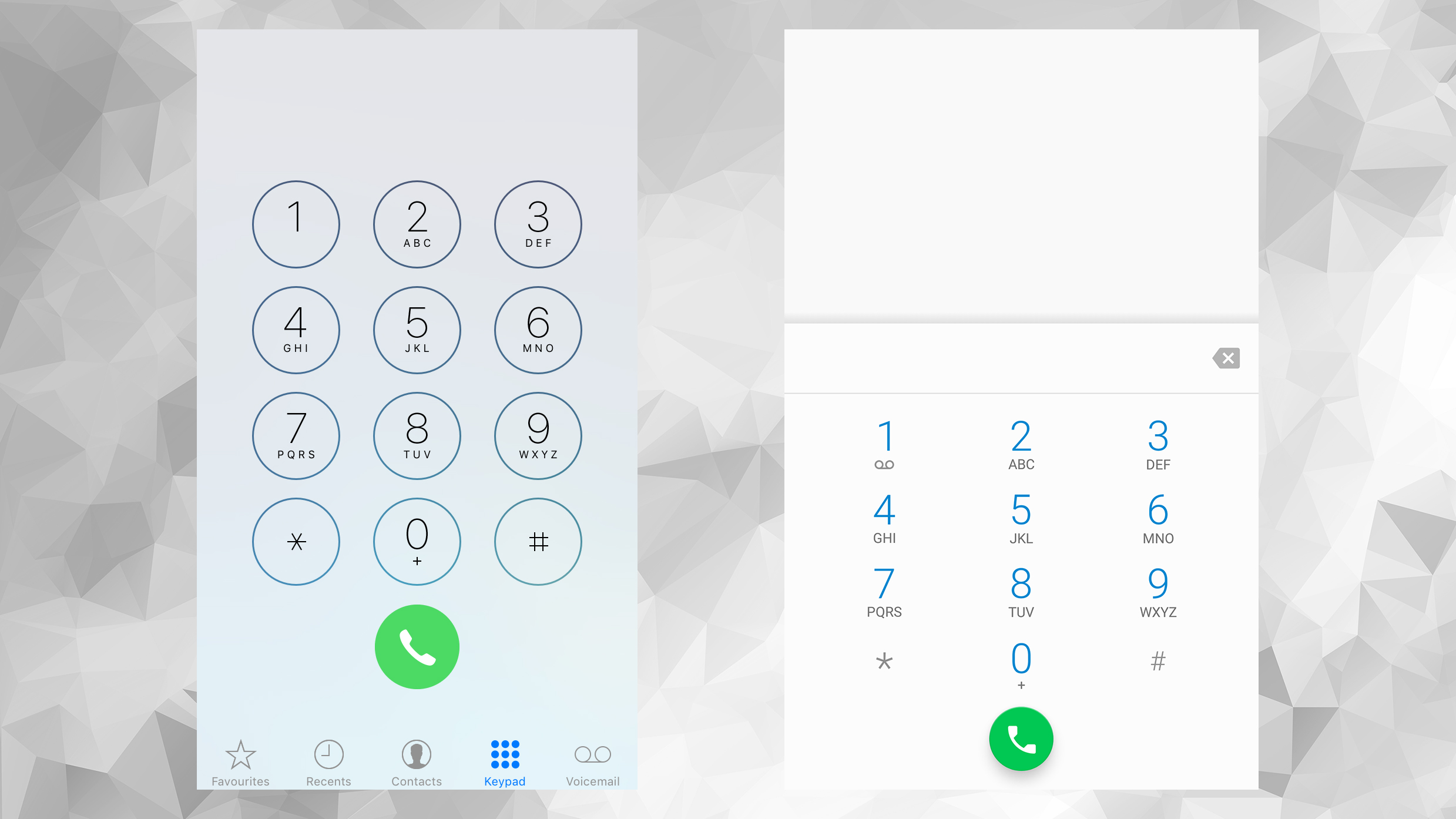
Then there are the default apps. If you don’t like the Android dialer, or SMS app, or contacts tool, you can swap it out for another. Apple gives you no such freedom — which for many iOS users is just fine. Android developers get deeper and more transparent access into the mobile OS, which makes a difference in the end experience for users.
When it comes to iOS, Apple is increasingly highlighting its approach to privacy. None of the information Siri stores about you goes back to Apple, and while that means some drawbacks in terms of customising your experience across multiple platforms and devices, it does mean you can be more sure of where your data is going and how it’s being used.
Then there’s the fragmentation issue. Unless you’re using a Nexus device, getting upgraded to the latest version of Android is still a frustrating process. iOS updates are simpler, faster, and available on older devices. It’s no wonder that many Android enthusiasts stick with Nexus phones just to ensure speedy software upgrades.
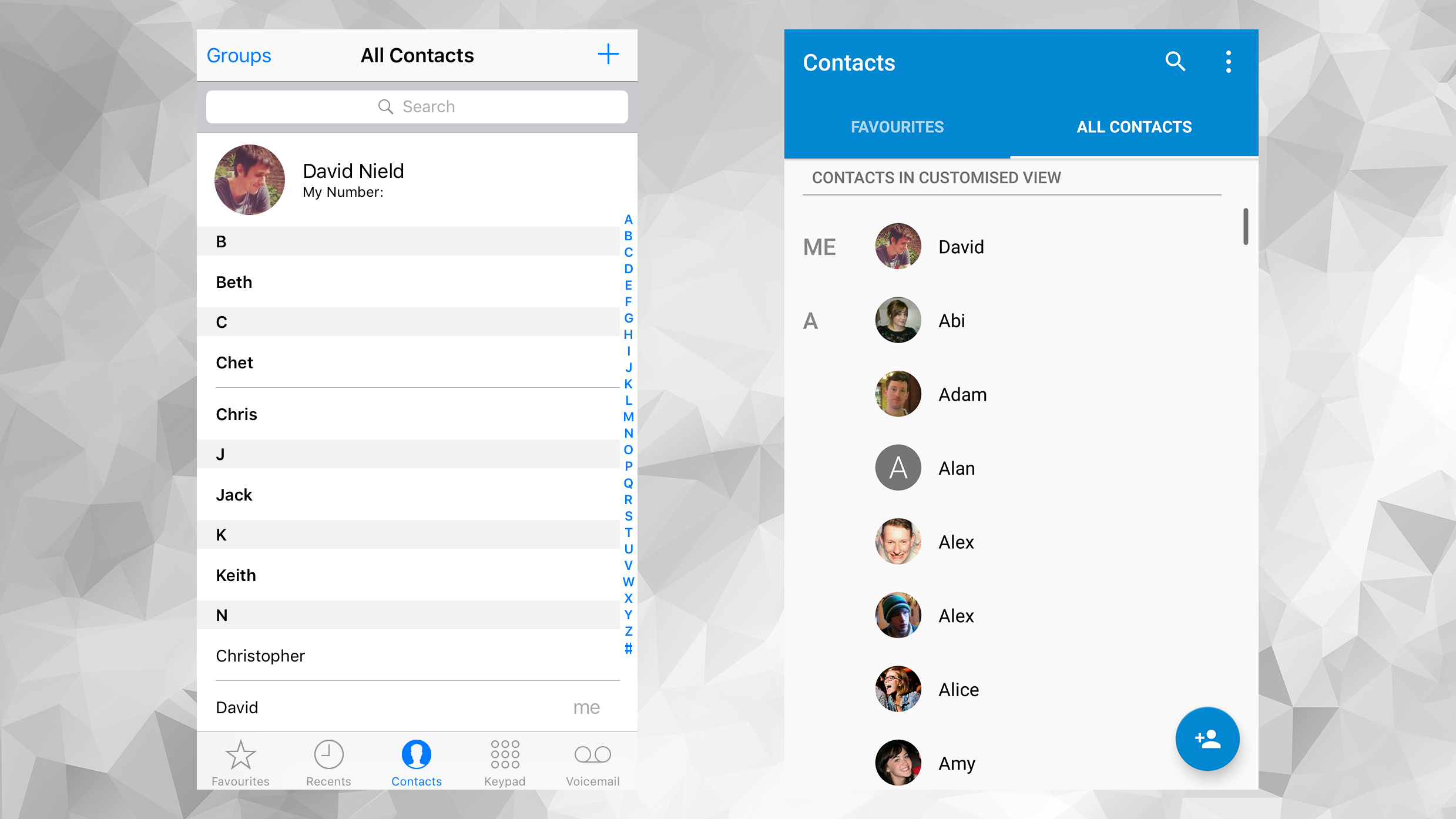
On the flip side, using an iPhone or iPad with another piece of hardware that isn’t made by Apple can also be frustrating. Google’s overarching cloud-based approach means jumping from Android to Chrome to iOS is much more straightforward. Indeed, if you’re using its apps on an iPhone ahead of Apple’s, Google is probably almost as pleased as it would be had you bought an Android handset.
All The Similarities
This year Android has caught up with iOS in a few areas, and vice versa: Fingerprint recognition support and a revamped app permissions system are new to Google’s OS, for example, while Apple has added a low battery mode and even a back button (of sorts) — features Android users have been enjoying for quite some time.
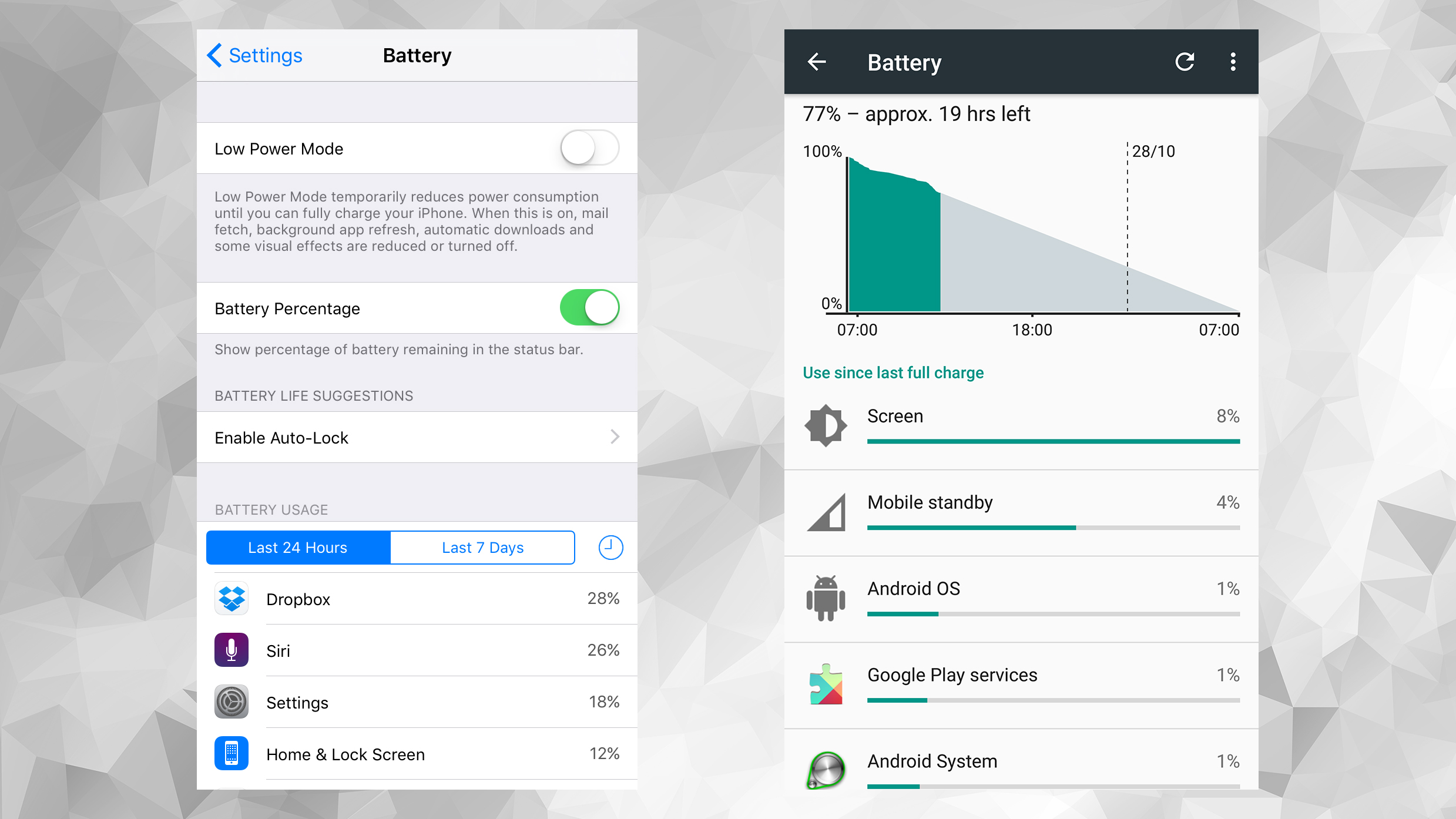
Telling these two software juggernauts apart was difficult enough already. Both OSes pack in support for NFC and mobile payment systems to call their own, both take a similar approach to notification pop ups and actions, and so on. Thanks to the latest iOS update, you can even search through the Settings app on both platforms.
iCloud Drive has become more Google Drive-like, with a separate app for file browsing. Meanwhile, both mobile operating systems are gradually becoming smarter at recognising the apps and contacts you tend to turn to most often: Android in the apps drawer and Share menu, iOS in Spotlight search and Siri.
Android now supports hardware encryption as standard, though it is device dependent and iOS definitely got there first. Even the app-switching screen looks very similar nowadays, as do the quick settings pop-up panels available on both OSes. With very few feature differences left, it might be down to the digital assistant apps powering everything to provide the main distinctions in the future.
Google Now on Tap vs. Proactive Siri
Both Google Now and Siri get major upgrades in the latest versions of their respective OSes. Google Now on Tap gives the digital assistant access to what’s inside your apps (if the developers are prepared to support it): band names, movie titles, places and so on. It shows promise, but at best it’s going to save you a few extra taps or voice commands.
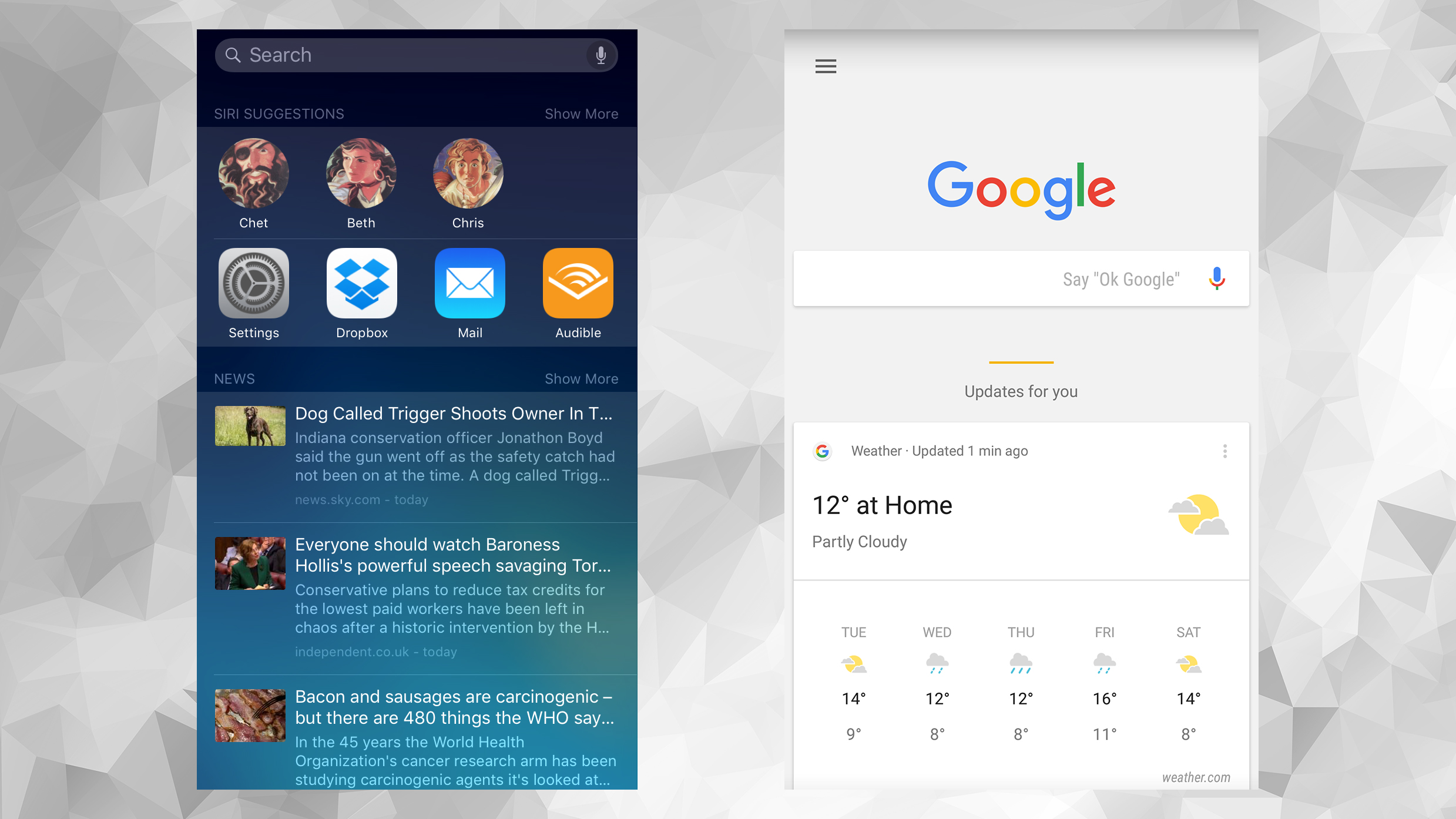
The long-term aims of Google Now remain more intriguing: Working behind the scenes to know as much about you as it’s possible to know, anticipating your needs ahead of time, and mining data from other Google apps to make Android as personalised as it possibly can be. The more automatic personalisation the better, though there’s a privacy trade-off to consider.
As you’ve probably noticed Google Now is updated independently of Android too, on both Android and iOS. Deeper app integrations arrived earlier this year and small extra features continue to get added on a regular basis. Like Siri, it remains mostly mobile-only for now, though it does exist in Chrome and Chrome OS in a limited form.
Siri, meanwhile, has a contextually aware update of its own, making the app able to recognise what’s on screen and interpret your requests accordingly. The new Proactive update rolled out by Apple attempts to add some Google Now-style features, in that Siri will surface apps and information you need at certain times and in certain places without you having to ask for it.
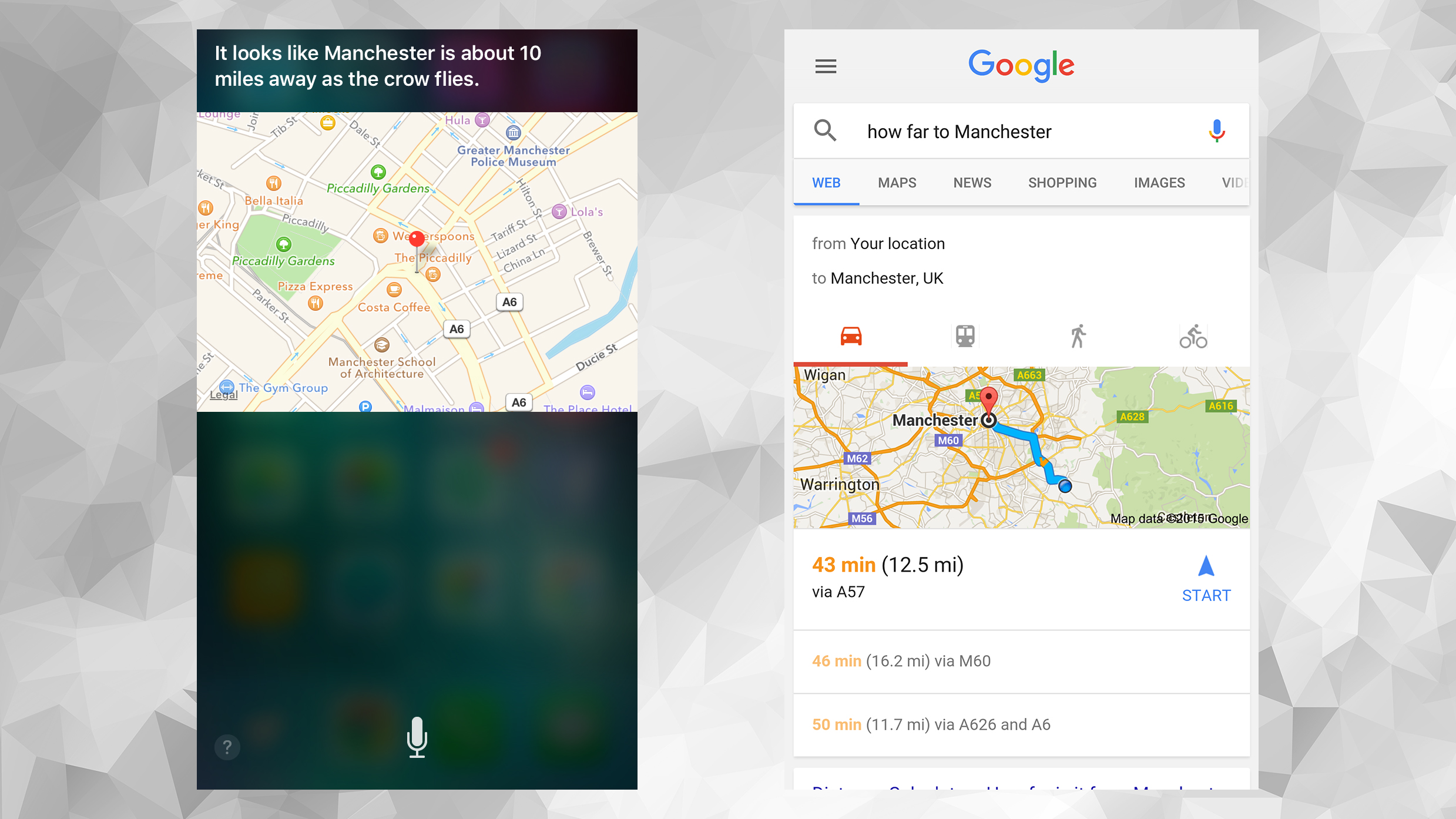
Both digital assistants have previously proved themselves adept at finding information from the web or toggling phone settings. Siri continues to have the edge in terms of getting something out of an app, like photos or music — Google Now is still primarily about information gathering whereas Siri focuses first on giving you voice control for every part of your device.
As you would expect, Apple and Google are increasingly making it difficult to leave behind Google Now or Siri (see also Microsoft and Cortana). The ‘better’ app really depends on where most of your stuff is stored and which platform you use most often, bringing us neatly on to…
Native Apps and Ecosystem
Both Google and Apple continue to add spit and polish to their native apps, though of course iOS differs from Android in that the stock apps are updated at the same time as the operating system itself. All these apps continue to get minor upgrades that we don’t have time to explore here, but there are very few stand-out differences to talk about — Apple Maps even has public transit information at long last.
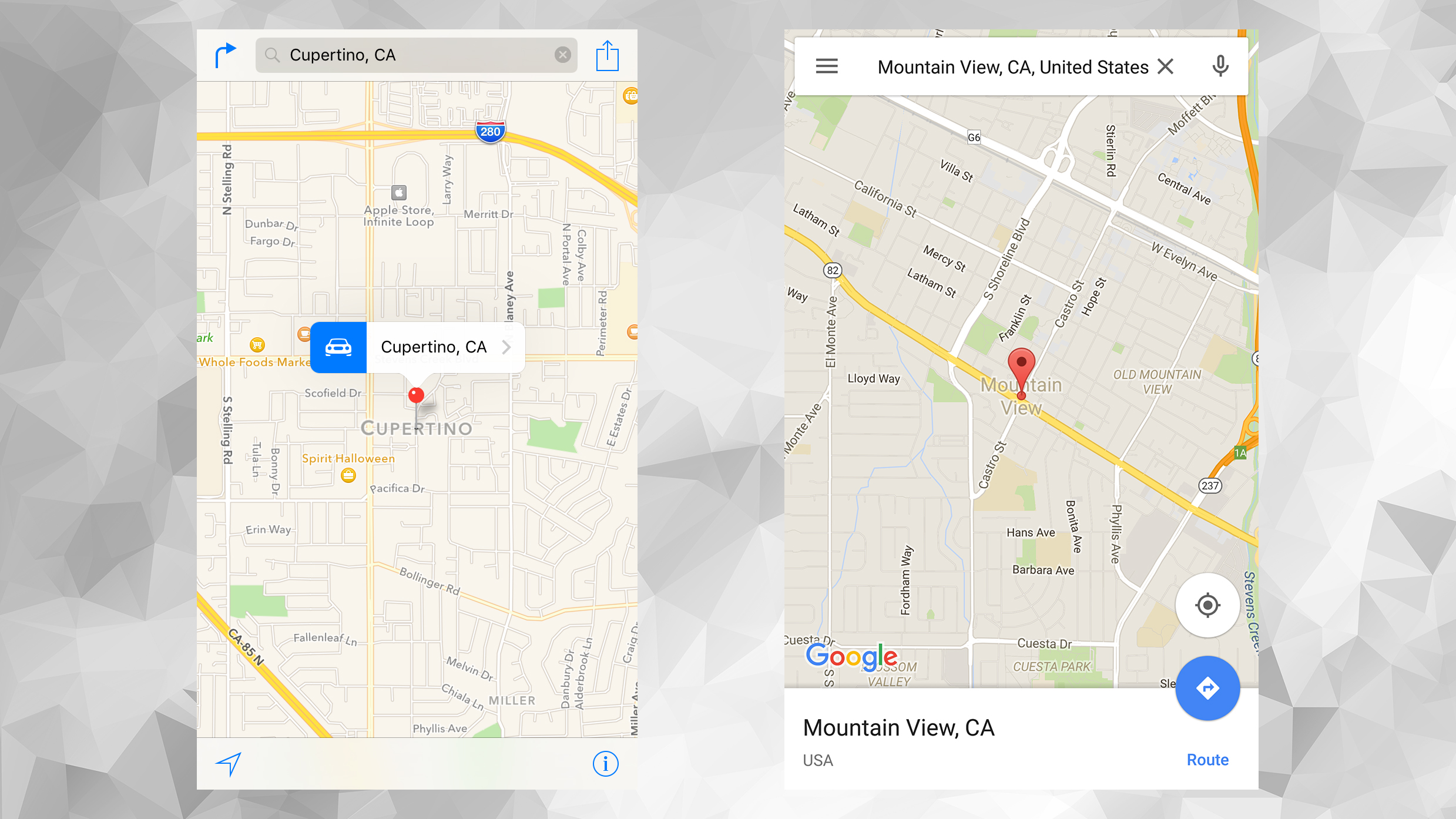
Google’s revamped Photos tool is worth a mention and seems to be ahead of Apple’s iCloud Photo Library at this stage, though with the app available on both iOS and Android it’s hardly going to make you choose one phone over another. The web interface is a major plus point, but here we’re getting away from the main Android vs iOS debate.
As we’ve already mentioned, iOS is much more suitable if you’ve gone all in with Apple hardware. There are no Apple apps available for Android (though Apple Music is on the way) and very few for Windows, and that means switching to iOS or OS X is much easier than switching away from them. To some extent the same can be said for media content purchased from iTunes, though there is at least Windows support.
App choice continues to be strong on both platforms. Major new apps almost always appear on both Android and iOS around the same time, though some smaller, startup-developed apps debut on iOS first due to the problems of coding for so many types and variations of Android device. There are still a handful of great iOS apps not available on Android.

Google and Apple have set their courses with Android and iOS and the most recent major updates don’t deviate from them. Android is the more open and more customisable of the two, while iOS offers a less fragmented, more private experience. What is noticeable is that even while picking out differences between them becomes harder, so does the process of trying to jump from one to another.
